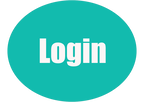Welcome to pictomed
PICTOMED is a registered tax-exempt, charitable, and non-profit organisation (i.e. Verein) in Switzerland.
PICTOMED's main project is a web-based, non-verbal, visual communication tool to overcome language barriers in doctor-patient communication.
PICTOMED enables healthcare providers and patients who do not share a common language to communicate with ease, simply by pointing to pictures. We provide over 300 illustrations of medical symptoms.
PICTOMED’s visual communication tool has been mainly developed to help marginalised patients with language barriers due to migration background to get medical attention.
PICTOMED's main project is a web-based, non-verbal, visual communication tool to overcome language barriers in doctor-patient communication.
PICTOMED enables healthcare providers and patients who do not share a common language to communicate with ease, simply by pointing to pictures. We provide over 300 illustrations of medical symptoms.
PICTOMED’s visual communication tool has been mainly developed to help marginalised patients with language barriers due to migration background to get medical attention.
Pictures speak louder than words
First Let'sDiscover
PICTOMED enables direct communication between medical doctors and patients, and not as usual by means of a third party.
The advantage over language-specific offers is our wide range of application through independence of language and alphabet. After identification of patients in need of language assistance, the healthcare provider can either choose to take a history through a survey (buttons of a body map) or to search only specific symptoms in a supportive manner. More |
IT'S UP TO USOur goal
We hope that PICTOMED will be a small contribution…
to foster universal access to health, migrant empowerment, humanitarian relief, solidarity and to passionately advocate of inclusion and rights for migrant and refugee populations. Learn more about our Research projects. By the way: become a language assistance sponsor! |
Background
The necessity and right to interpretation is internationally recognised (WHO) in the healthcare setting for patients who are not or not sufficiently able to express themselves or understand the medical terms in a given local language.
More
More
The doctor-patient communication is most important for the success of diagnostic as well as therapeutic endeavours. To skip the doctor-patient communication out of stress is to deny the patient’s needs and rights.
Communication must not fail due to language barriers!
Communication is indeed the key to success by building up trust, improving the medical encounter experience, heightening the retention of critical information and enhancing performance.
Communication must not fail due to language barriers!
Communication is indeed the key to success by building up trust, improving the medical encounter experience, heightening the retention of critical information and enhancing performance.



